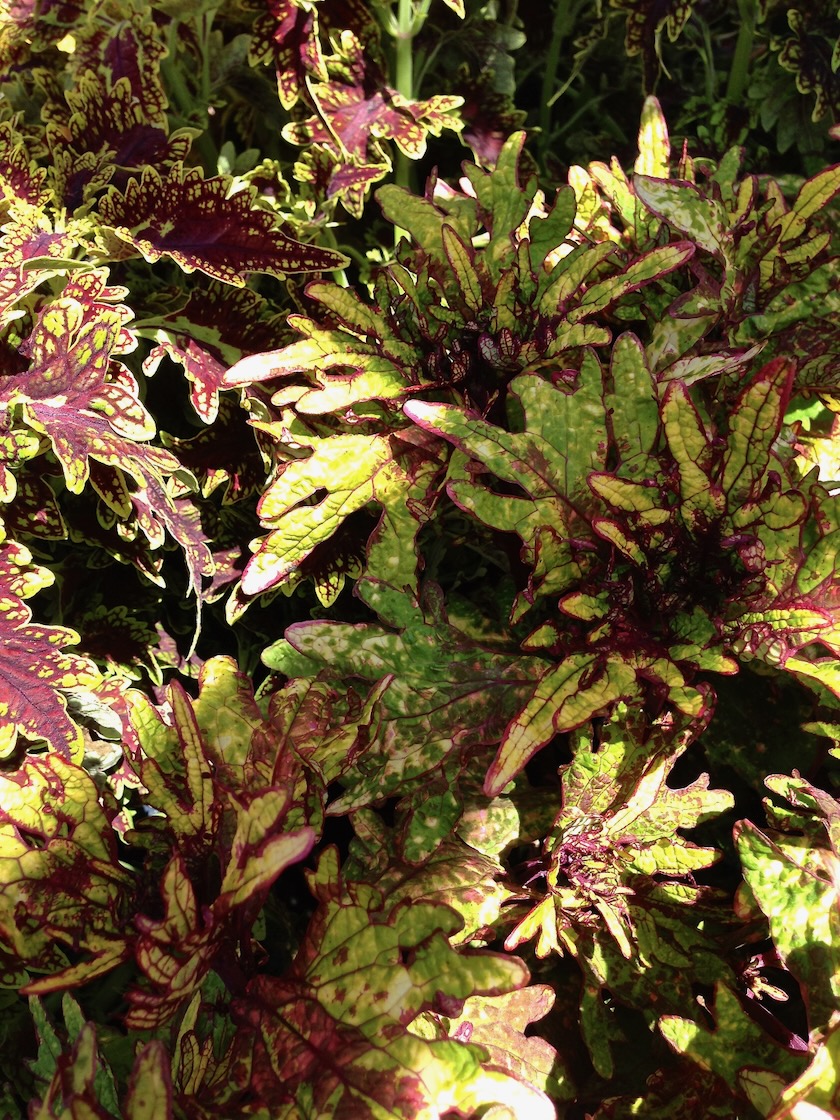Experience the Unique Charm of Coleus ‘Honey Crisp’: A Captivating Variegated Wonder
Coleus ‘Honey Crisp’ stands as a remarkable cultivar within the Coleus scutellarioides family, which belongs to the Lamiaceae family, renowned as the Mint or Deadnettle family. While the specific origin of ‘Honey Crisp’ remains undisclosed, it has garnered popularity across gardens and landscapes worldwide.
Characteristics and Description
What sets Coleus ‘Honey Crisp’ apart is its stunning variegated foliage, which captivates the beholder. The leaves boast a striking blend of warm colors, ranging from radiant golden yellow and creamy white to delicate hints of pink. This exquisite variegation forms an enchanting mosaic-like pattern, infusing elegance into any planting arrangement. The leaves themselves are typically heart-shaped or oval, and the plant takes on a bushy form, reaching a height of approximately 60-75 cm (24-30 inches).
Flowers
While Coleus plants can produce flowers, the primary allure of ‘Honey Crisp’ lies in its foliage rather than its blooms. Consequently, the flowers often possess minimal significance and do not contribute significantly to the plant’s overall appeal.
Flowering Season
If Coleus ‘Honey Crisp’ does undergo flowering, it typically occurs during late summer or early fall. However, many gardeners opt to remove the flowers to redirect the plant’s energy toward foliage development and prevent seed production. The focus of coleus cultivation primarily revolves around the striking foliage rather than the flowers.
Cultivation of Coleus ‘Honey Crisp’:
To successfully cultivate Coleus ‘Honey Crisp,’ it is crucial to consider factors such as sunlight, watering, soil requirements, pest and disease management, and propagation techniques.
Sunlight: ‘Honey Crisp’ coleus thrives in environments with partial shade to full shade. Although it can tolerate some direct sunlight, providing protection from intense midday sun proves beneficial, particularly in regions with hot climates. Excessive sun exposure may result in leaf burn or fading of the vibrant variegation.
Watering: Consistent watering is essential to maintain adequately moist soil for ‘Honey Crisp’ coleus. However, it is crucial to avoid overwatering or allowing the soil to become waterlogged. Striking the right balance and ensuring proper drainage is vital for the plant’s overall health.
Soil: Optimal growth for ‘Honey Crisp’ coleus necessitates well-draining soil. A fertile and loamy soil mix enriched with organic matter proves ideal, as it retains moisture while allowing excess water to drain away, mitigating the risk of root rot and other soil-related issues.
Pests and Disease: Coleus plants, including ‘Honey Crisp,’ generally exhibit moderate resistance to pests and diseases. However, occasional infestations of pests like aphids, mealybugs, or spider mites may occur. Regular monitoring, meticulous sanitation practices, and employing organic pest control methods like insecticidal soaps effectively manage such issues.
Propagation:
Various methods can be utilized to propagate Coleus ‘Honey Crisp,’ including stem cuttings and seed propagation. Stem cuttings are the most popular and reliable approach. By taking 4-6 inch cuttings from healthy parent plants, removing lower leaves, and placing them in a well-draining rooting medium, successful propagation can be achieved.
Coleus ‘Honey Crisp’ represents a captivating and unique addition to any garden or landscape. With its mesmerizing variegated foliage, it creates a visually stunning display, elevating the overall aesthetic appeal of any setting. Embrace the charm of this exceptional cultivar and indulge in the enchantment it brings to your horticultural endeavors.




